Umu ele'ele or umu ti, according to Green and Davidson (1974: 236-237) the "circular raised rim pits" were identified by Samoan informants "as large ovens, for all such pits excavated have proved to be ovens. Several informants separately stated that they were used for cooking the root of the ti (Cordyline /ruticosa L.). Umu ti, as ovens used for this purpose are called, have been made within the last 25 years in parts of Samoa, and some informants had participated in their construction and use. It was frequently stated that umu ti were always made in the bush, never in settlements, a statement which is supported by Kramer. The cooking of the ti root requires a high initial temperature, and an oven which will maintain its heat for a long period of time, up to several days". But, "the only excavated oven which contained preserved remnants of ti was the particularly deep example at Folasa." In the past 40 years not enough archaeological evidence has been collected to definitely define these large earth ovens as umu ti so we have assigned the more descriptive term umu ele’ele (earthen oven) until the exact use of these large ancient earth ovens can be ascertained. For a more complete description see the References at the end of this tutorial. In the following photos we have tried to make the reader familiar with what these umu ele'ele look like not only on LiDAR, but also at ground level and in aerial photos. |
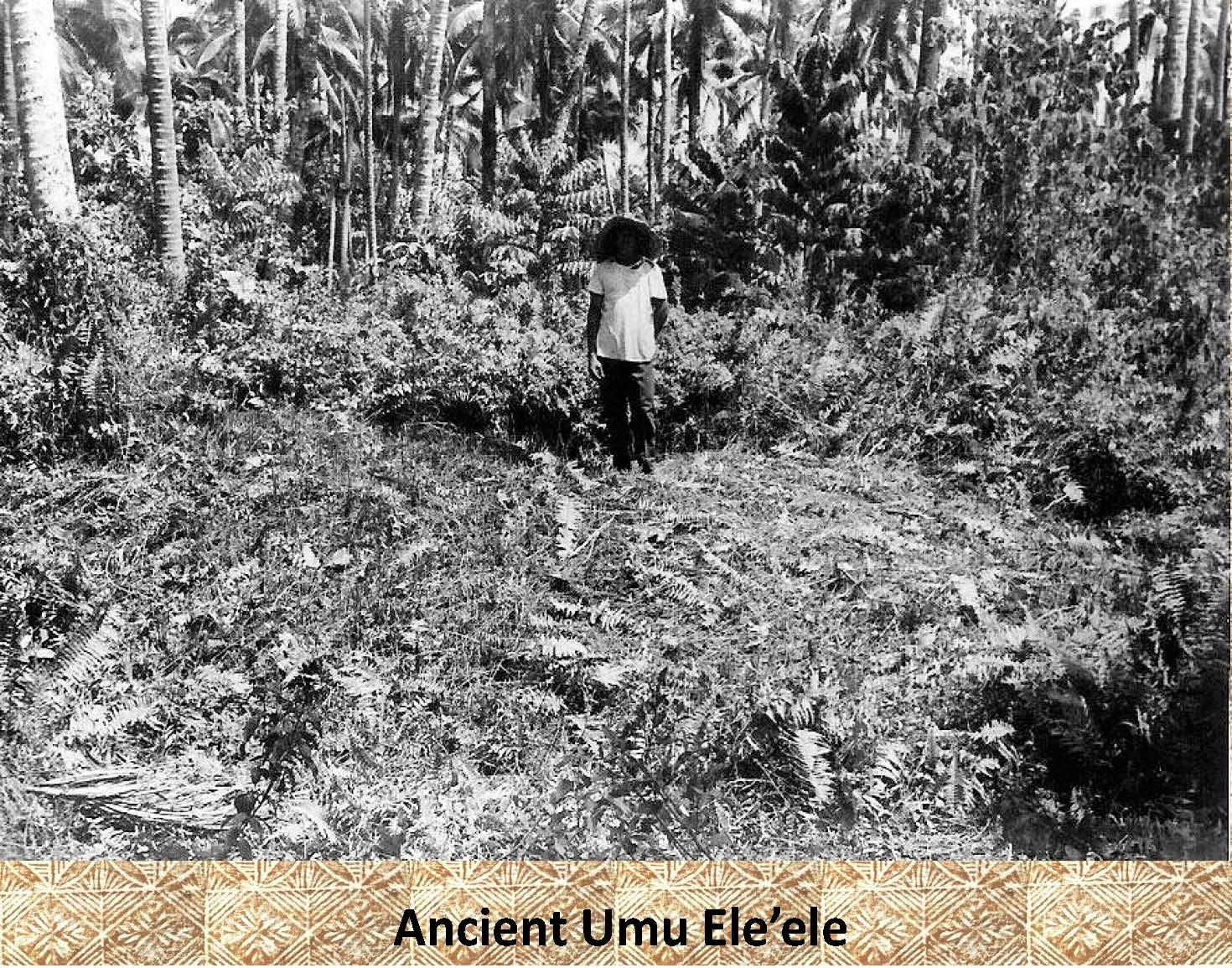
|
This is an example of an umu ele'ele at ground level (it is outlined in the next photo) |
|
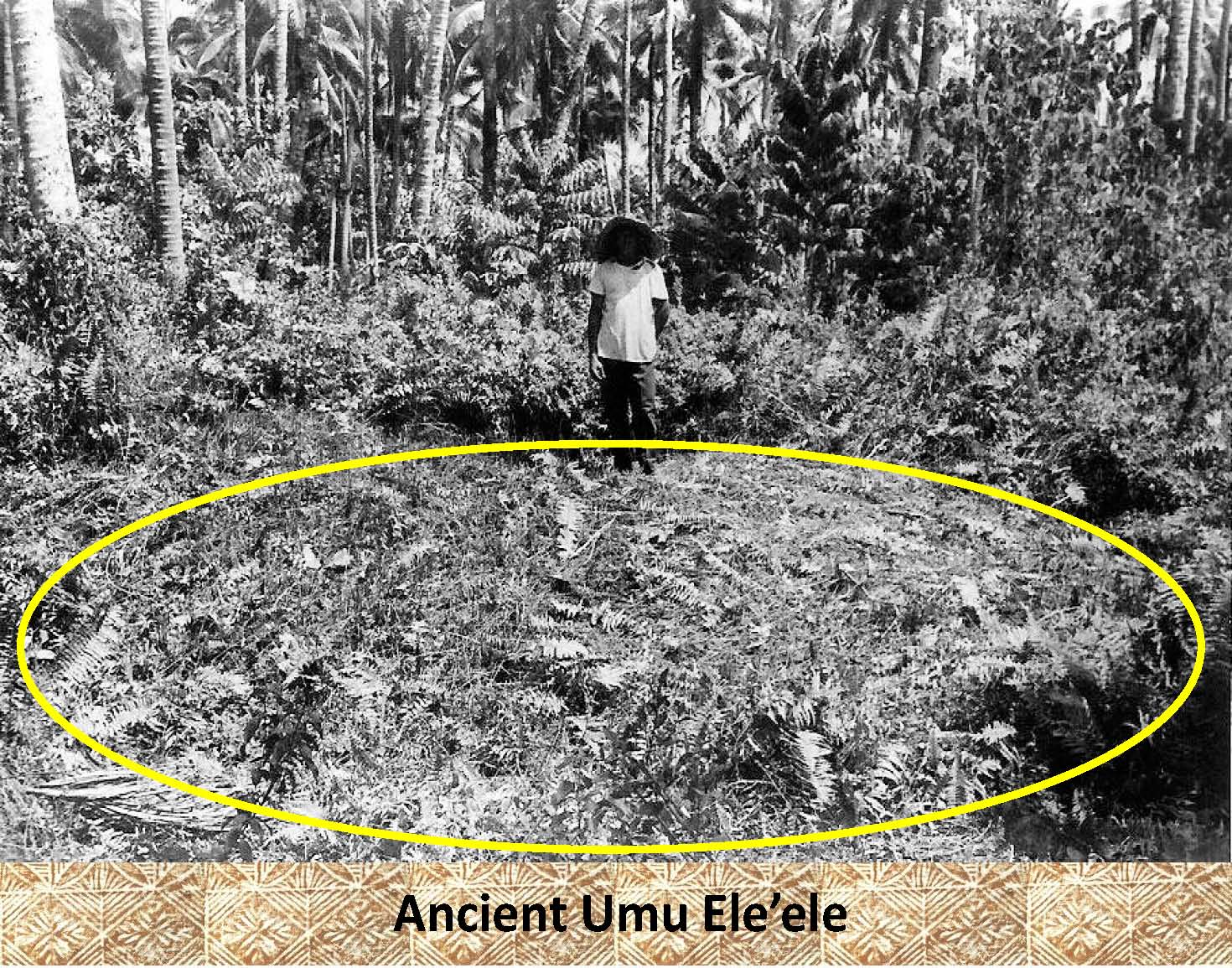 |
The umu ele'ele has been outlined as it is difficult to pick out in the previous photo. It is approximately 15 meters wide and over a meter tall. |
|
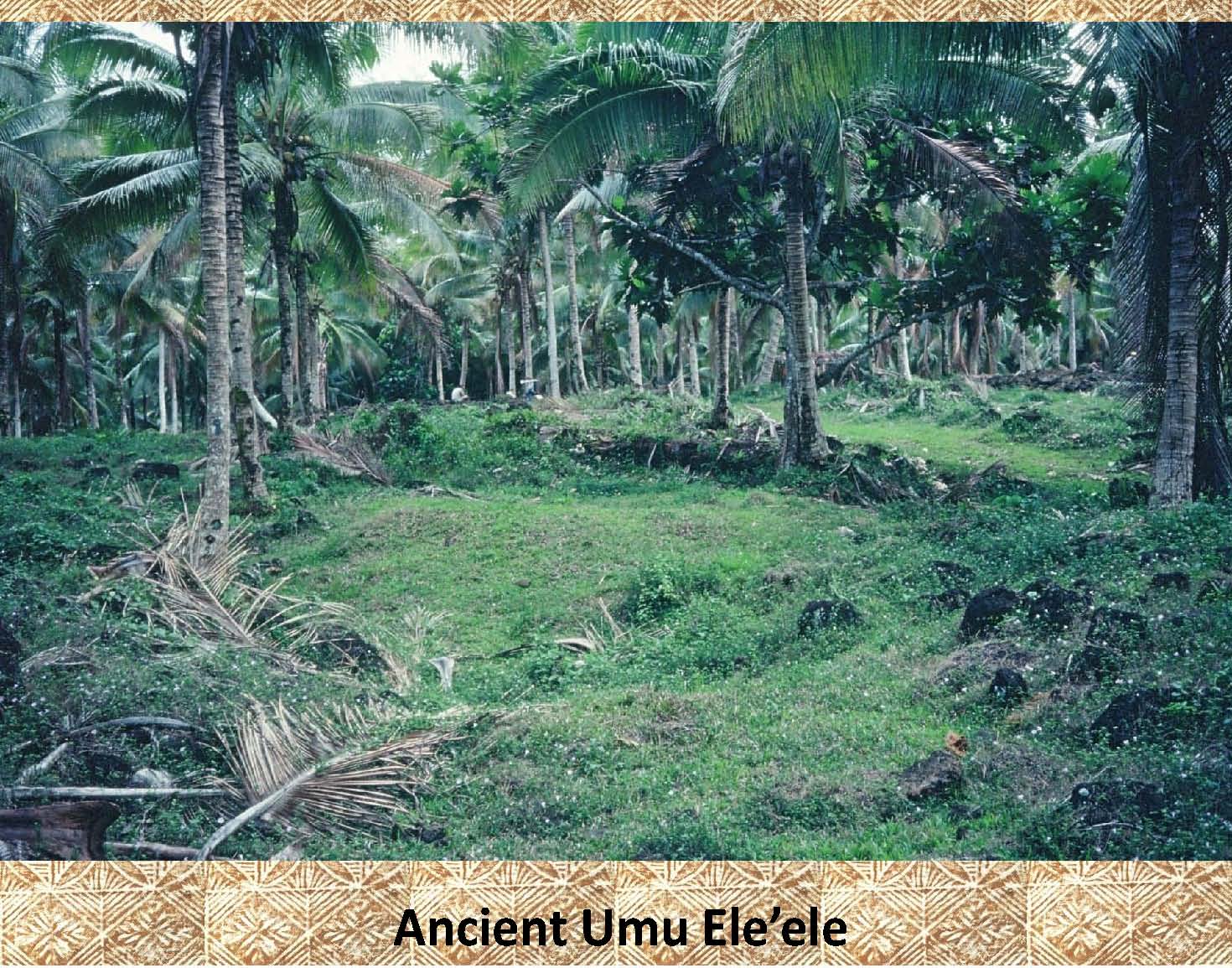 |
Here is another umu in cleared land the picture was taken at ground level (it is outlined in the next photo). |
|
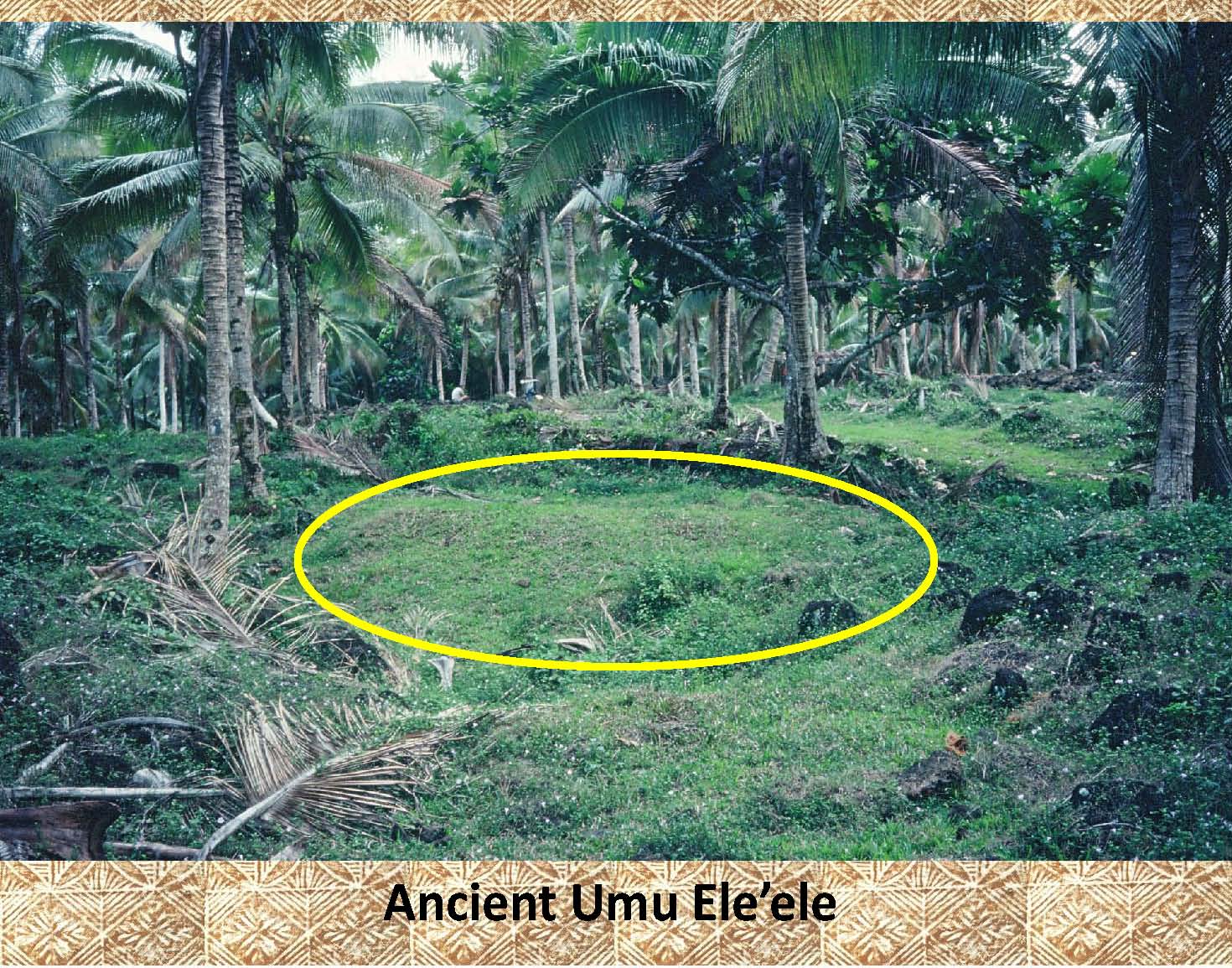 |
In this photo the umu ele'ele has been outlined. It is easier to pick out than the previous umu ele'ele as it is in a coconut plantation grazed by cattle. |
|
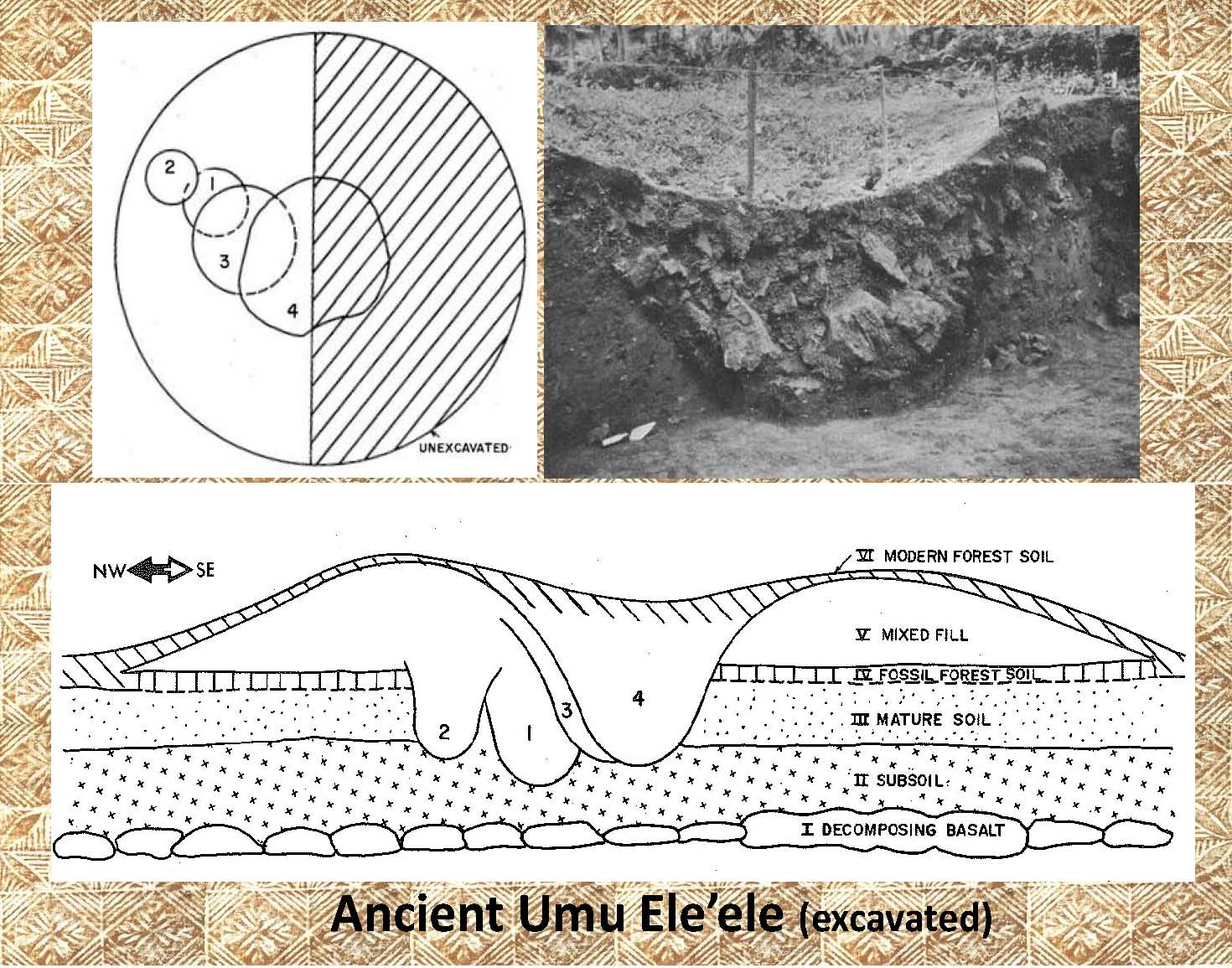 |
This is an example of an excavated umu. Notice in the black and white photo the large pit that has been filled with rock. Also notice in the drawings that this was not a single use oven, but a series of 4 ovens built over time. This is the same oven as the one photographed in the coconut plantation above. The report on the excavation of this oven is available in the References below (Jennings, et al (1980)). |
|
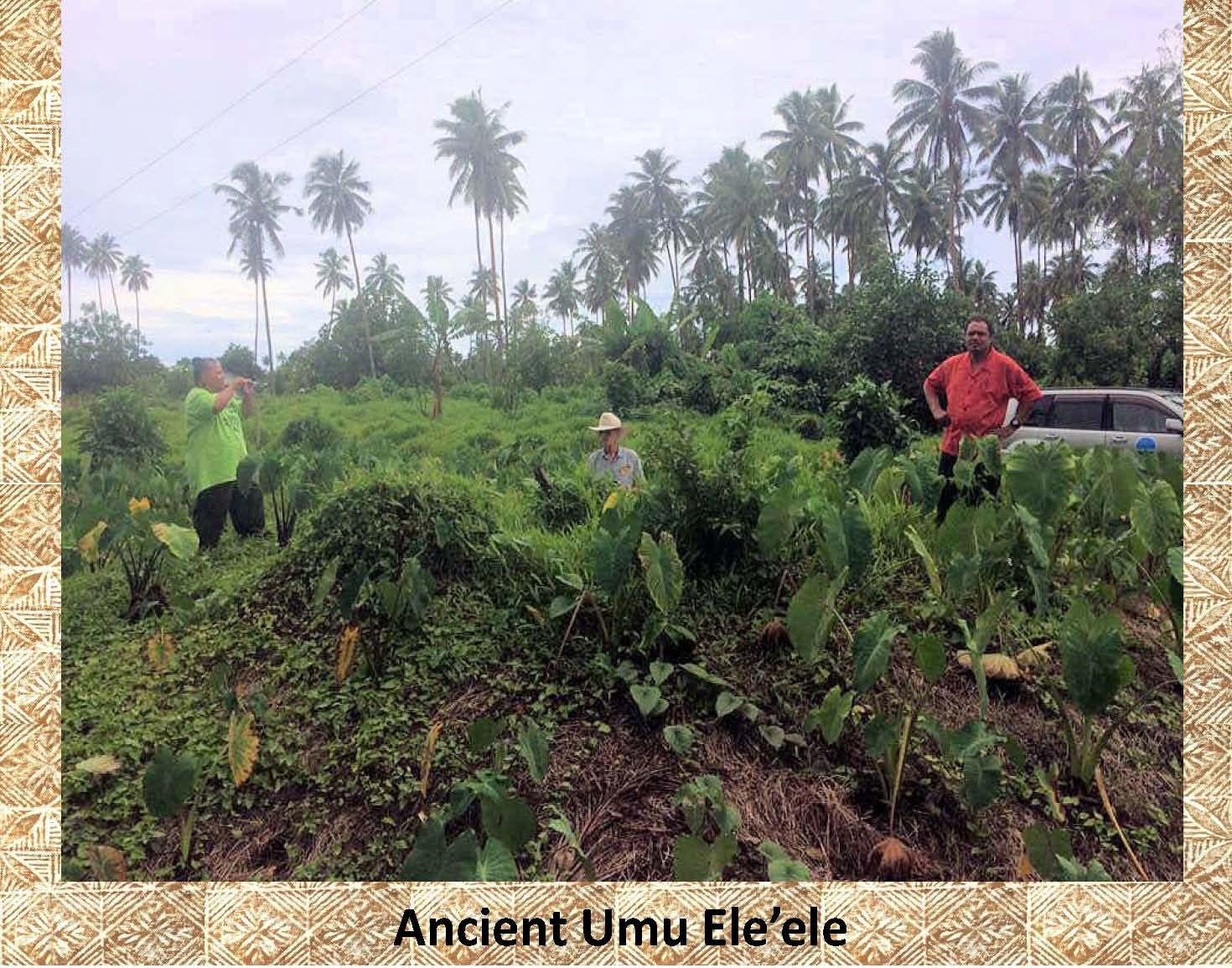 |
Here is an example of an umu that has become part of someone’s taro plantation. It is outlined in the next photo. |
|
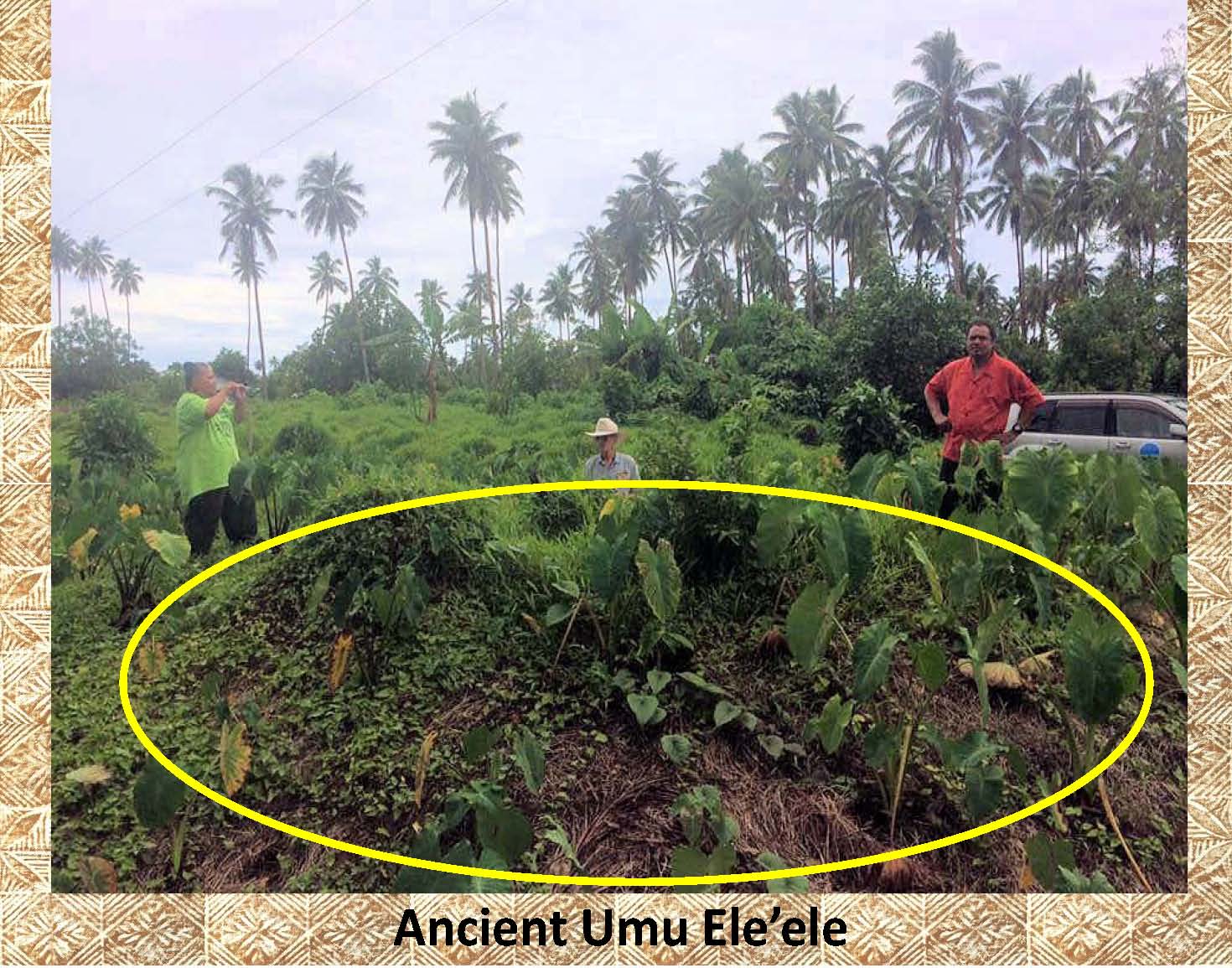 |
This is the same umu as in the previous photo but it as been outlined to make it easier to see. |
|
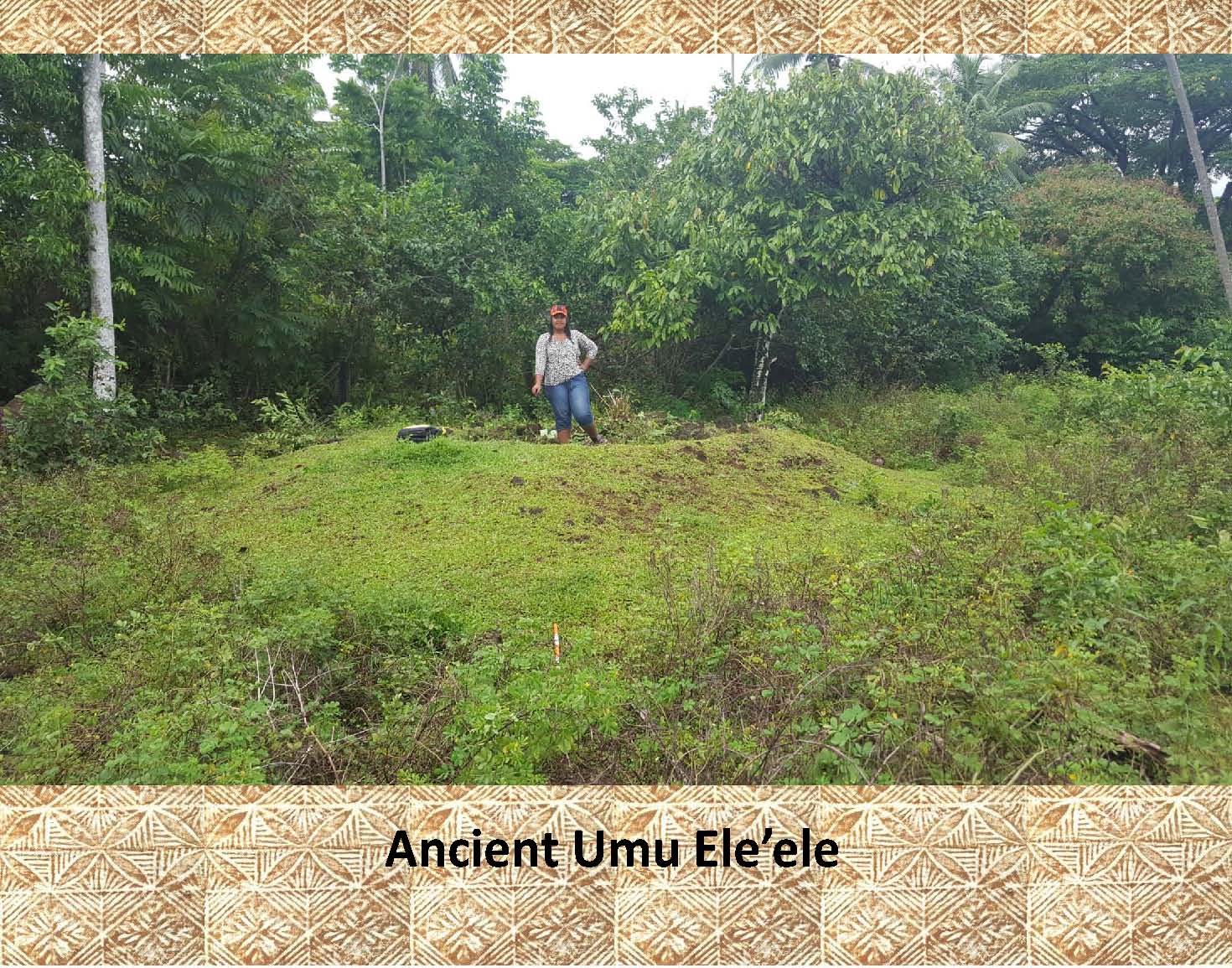 |
This photo and the next are of a medium sized, 10 meter wide umu that as been cleared by grazing cattle. |
|
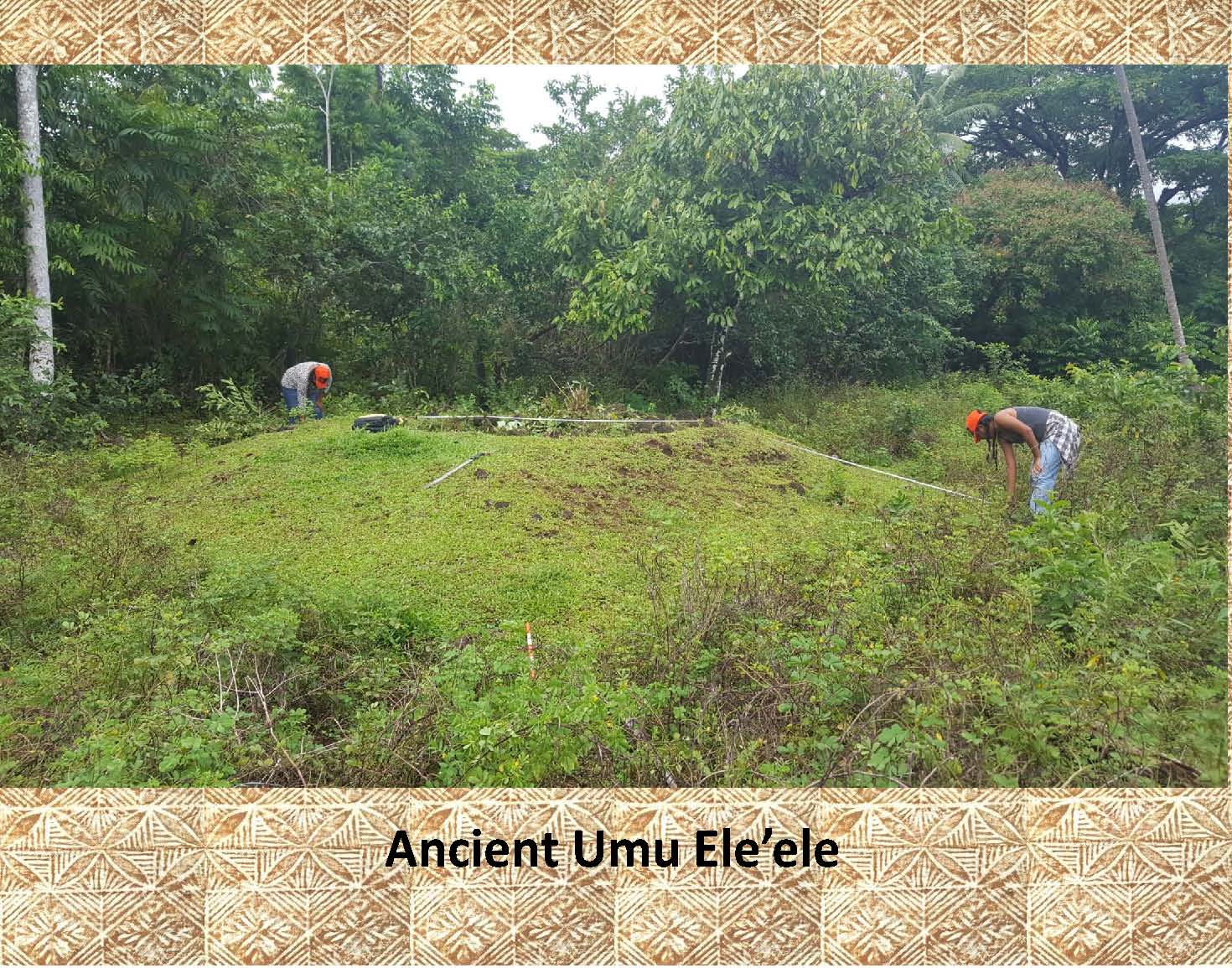 |
In this photo it is being measured by the field survey crew. |
|
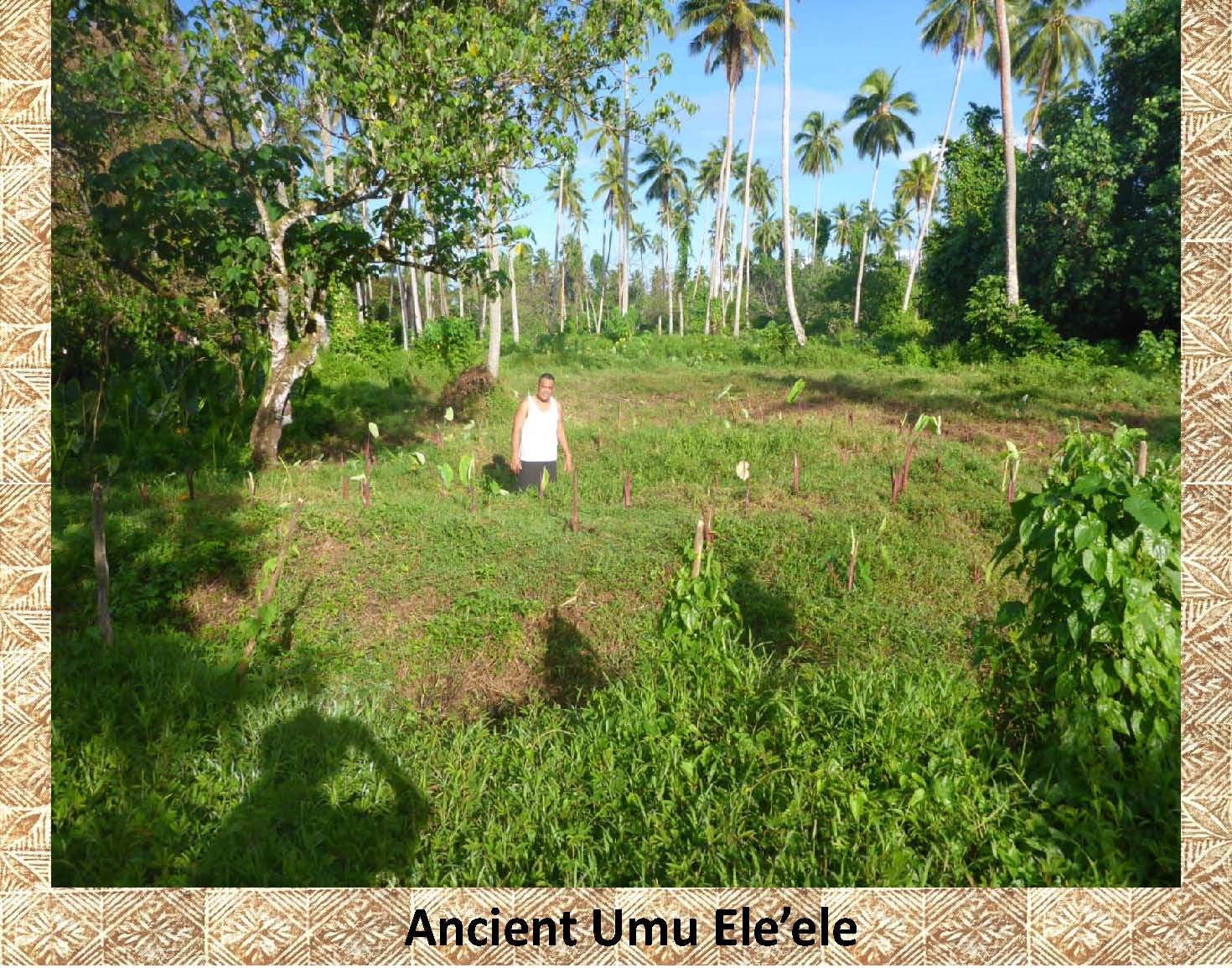 |
Here we have someone standing in the central depression of the umu to give an idea of its depth. |
|
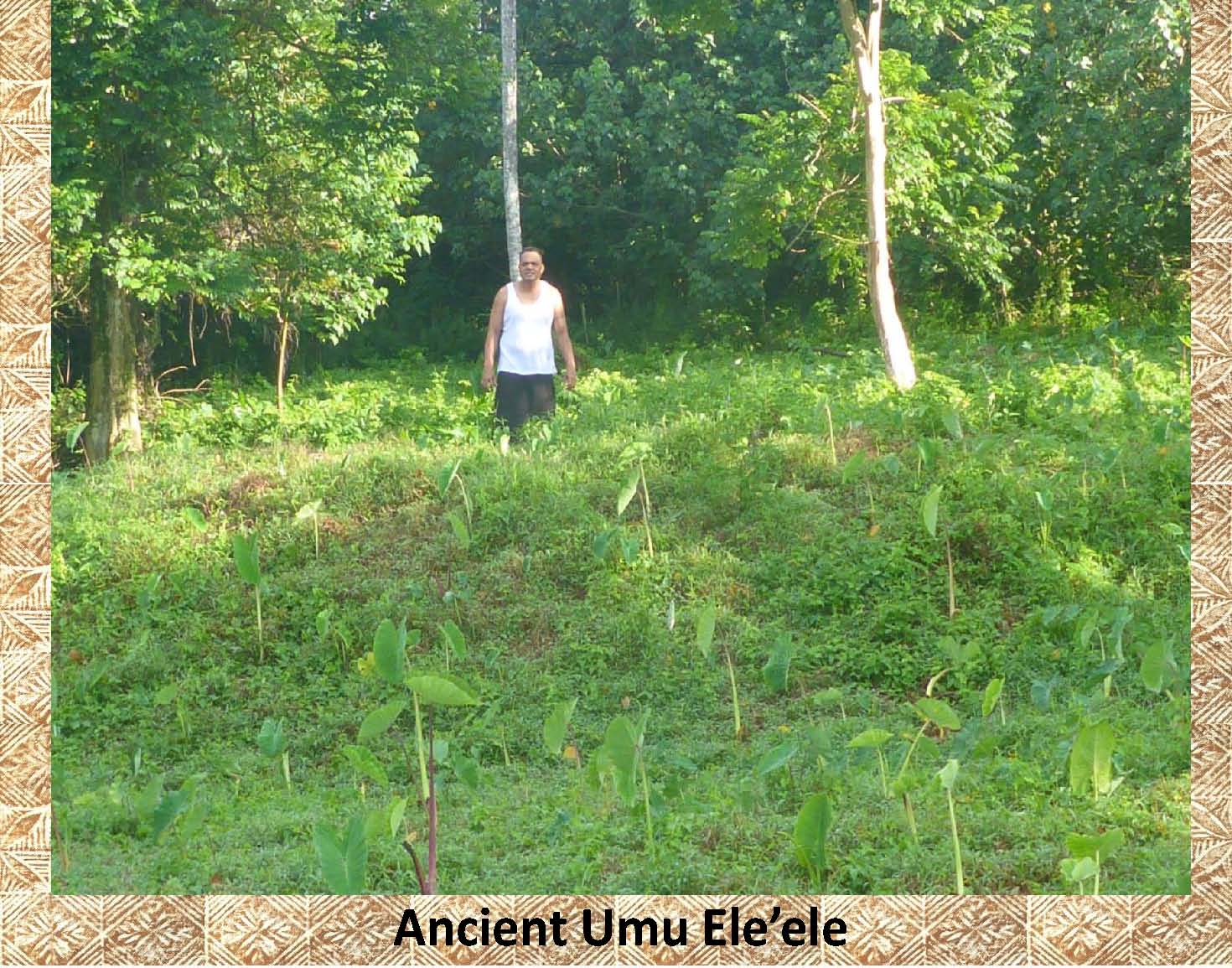 |
Here, again, we have someone standing in the central depression of an umu to give an idea of its depth. These 2 umu are featured in the following aerial photo. |
|
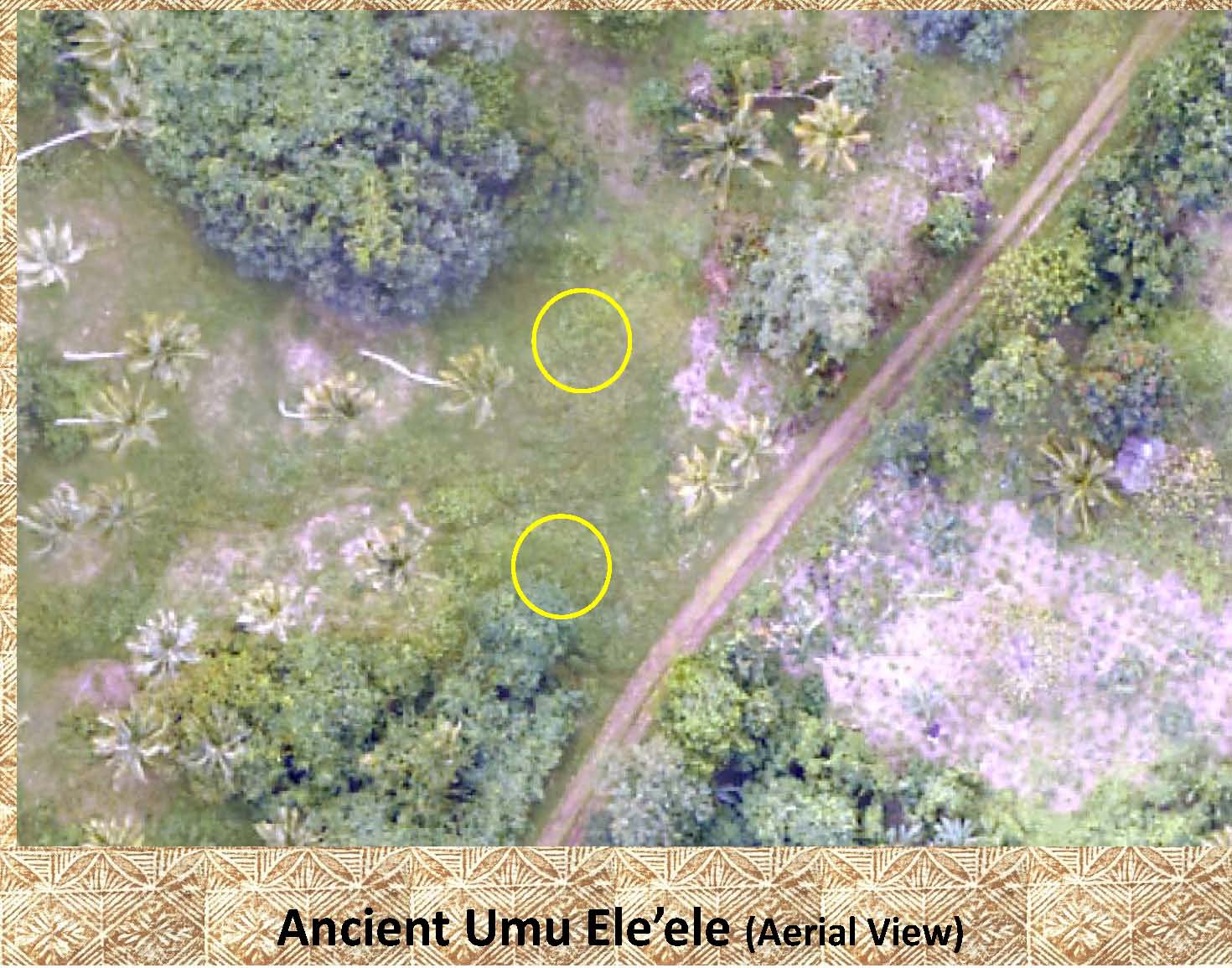 |
This aerial photo features the 2 umu shown in the photos directly above. Notice how difficult it is to pick out the 2 umu in the plantation below. They have been circle in yellow to make them easy to find. |
|
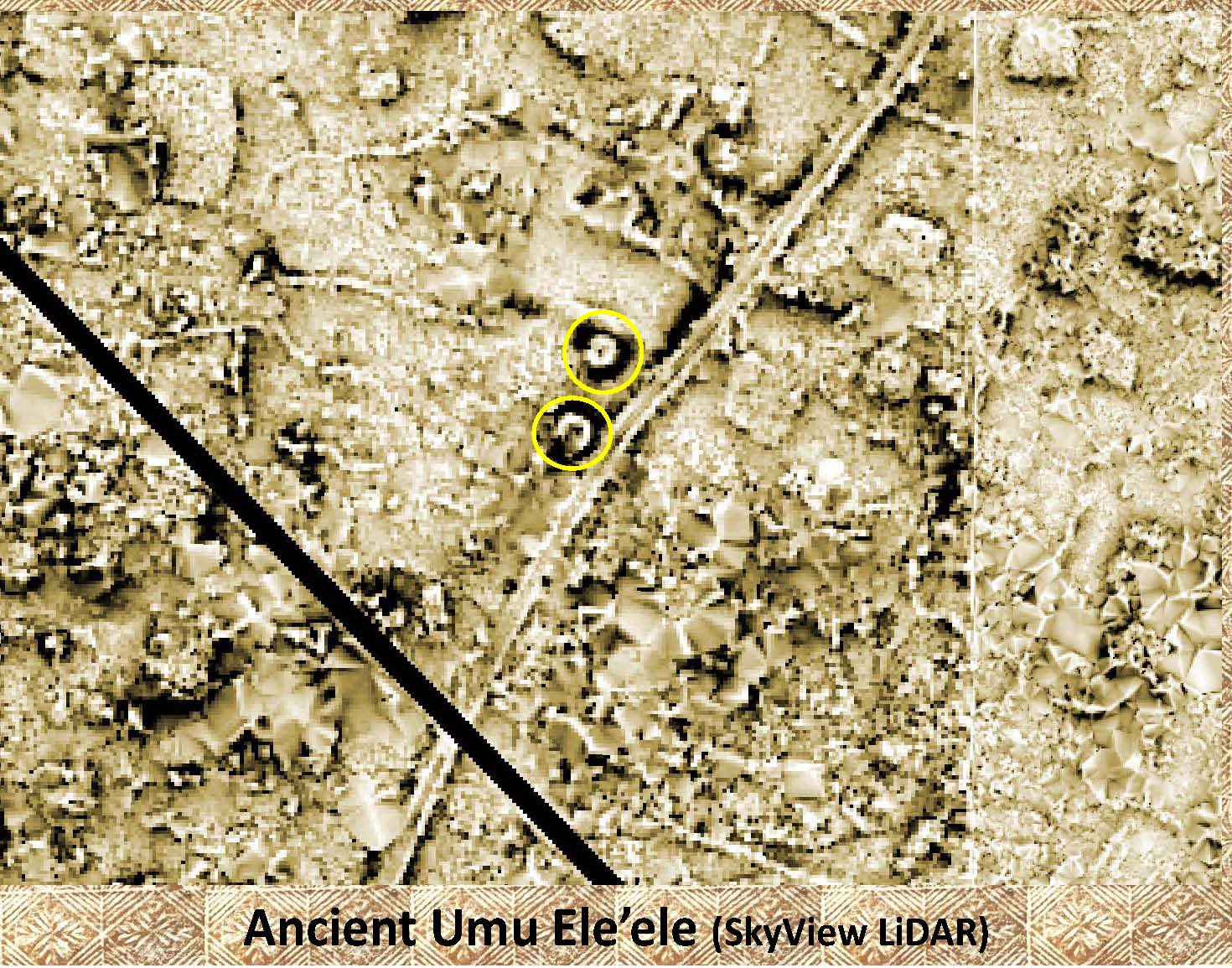 |
Here are the same 2 umu as in the areial photo above, circled in yellow. Notice how they stand out in the LiDAR image. |
|
 |
This is an aerial drone photo of a 15 meter wide umu which will be featured in the next set of photos. It is over 2 meters tall and 1 meter deep. |
|
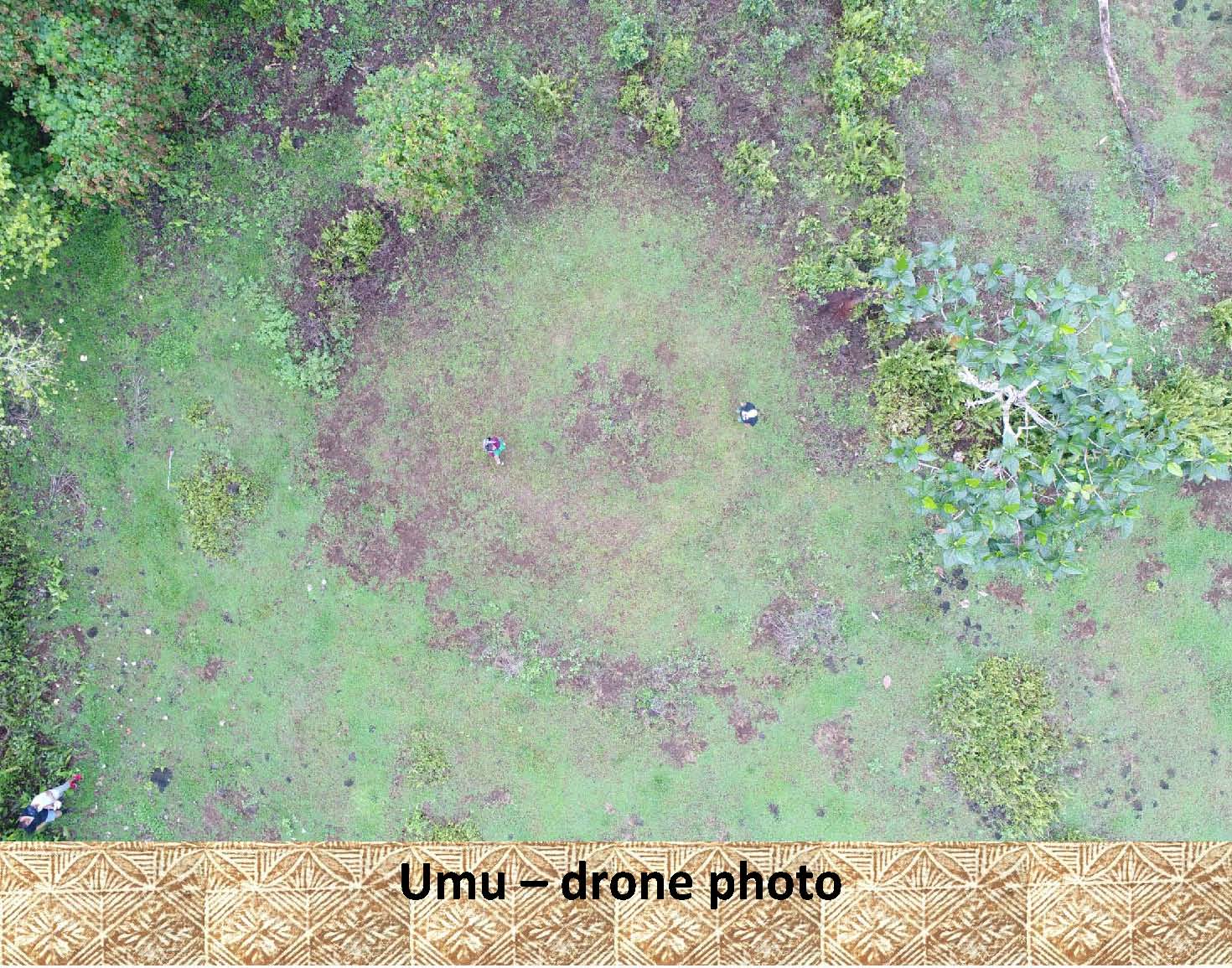 |
This drone picture was taken over the center of the umu and shows how difficult it is to see it even at this close range. |
|
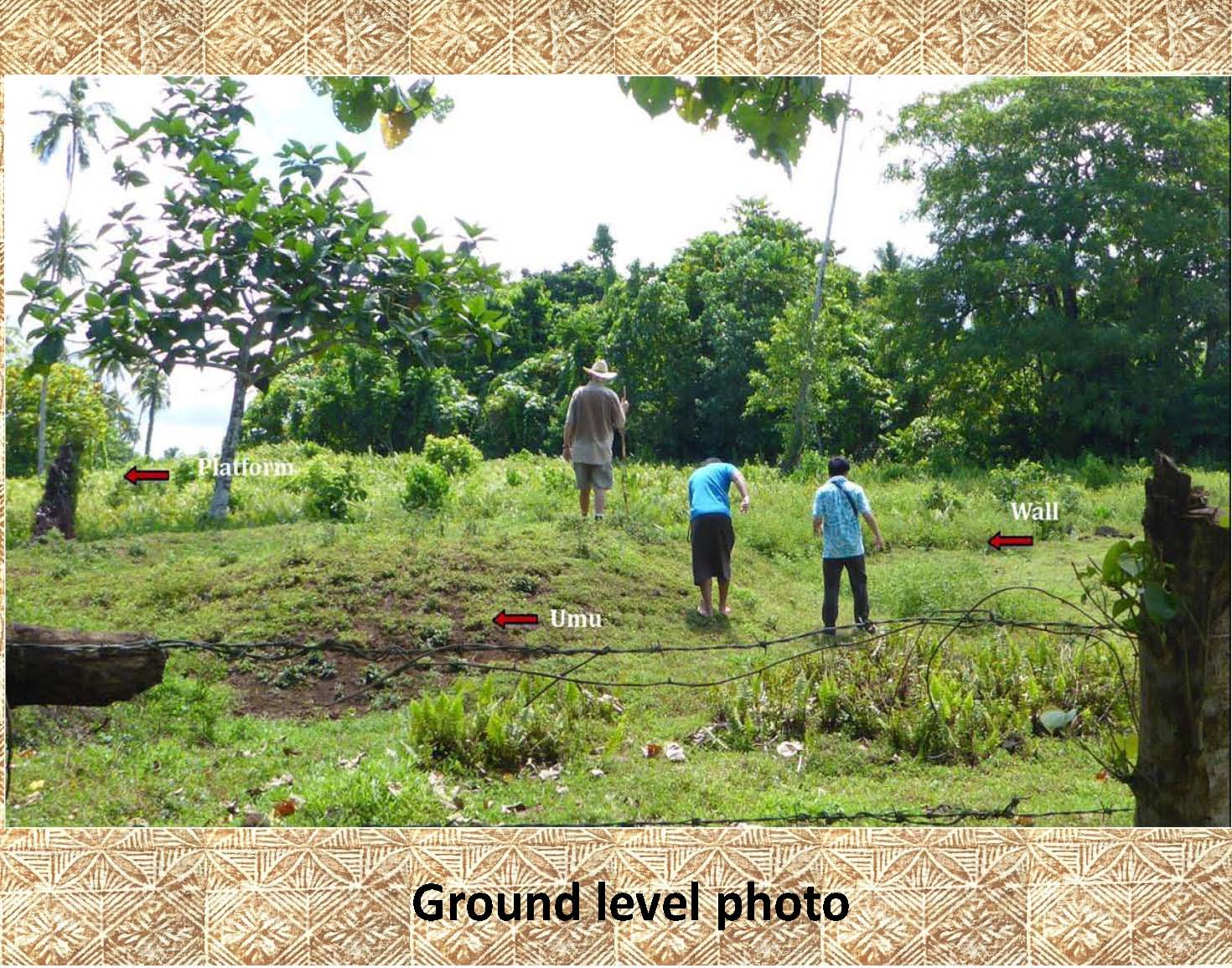 |
This picture shows the same large umu as above and its associated wall and platform taken from ground level. |
|
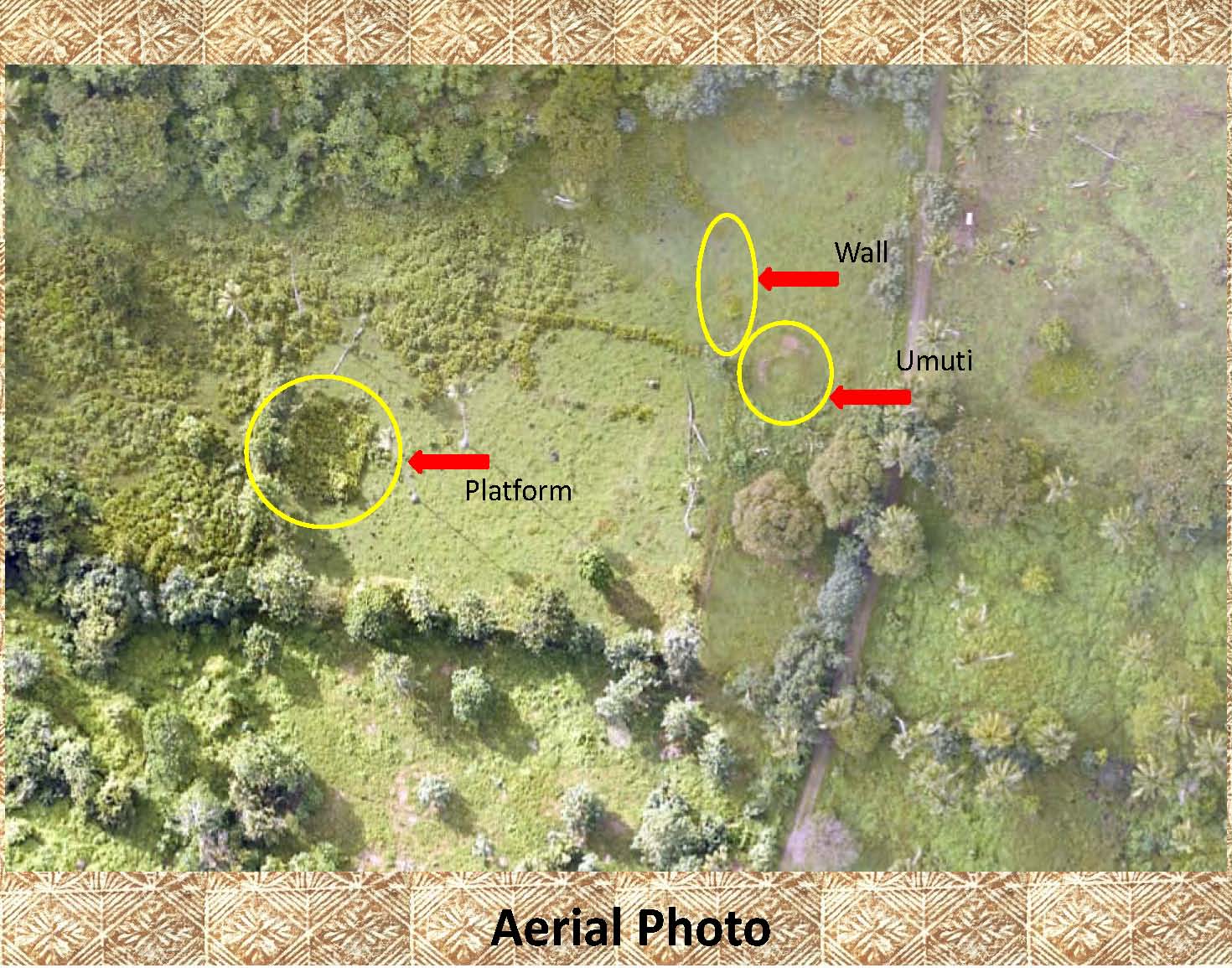 |
This is an aerial photo showing the same features as shown in the ground photo above. The features have been marked with yellow to make them easy to find. Notice how hard they are to see without the help. |
|
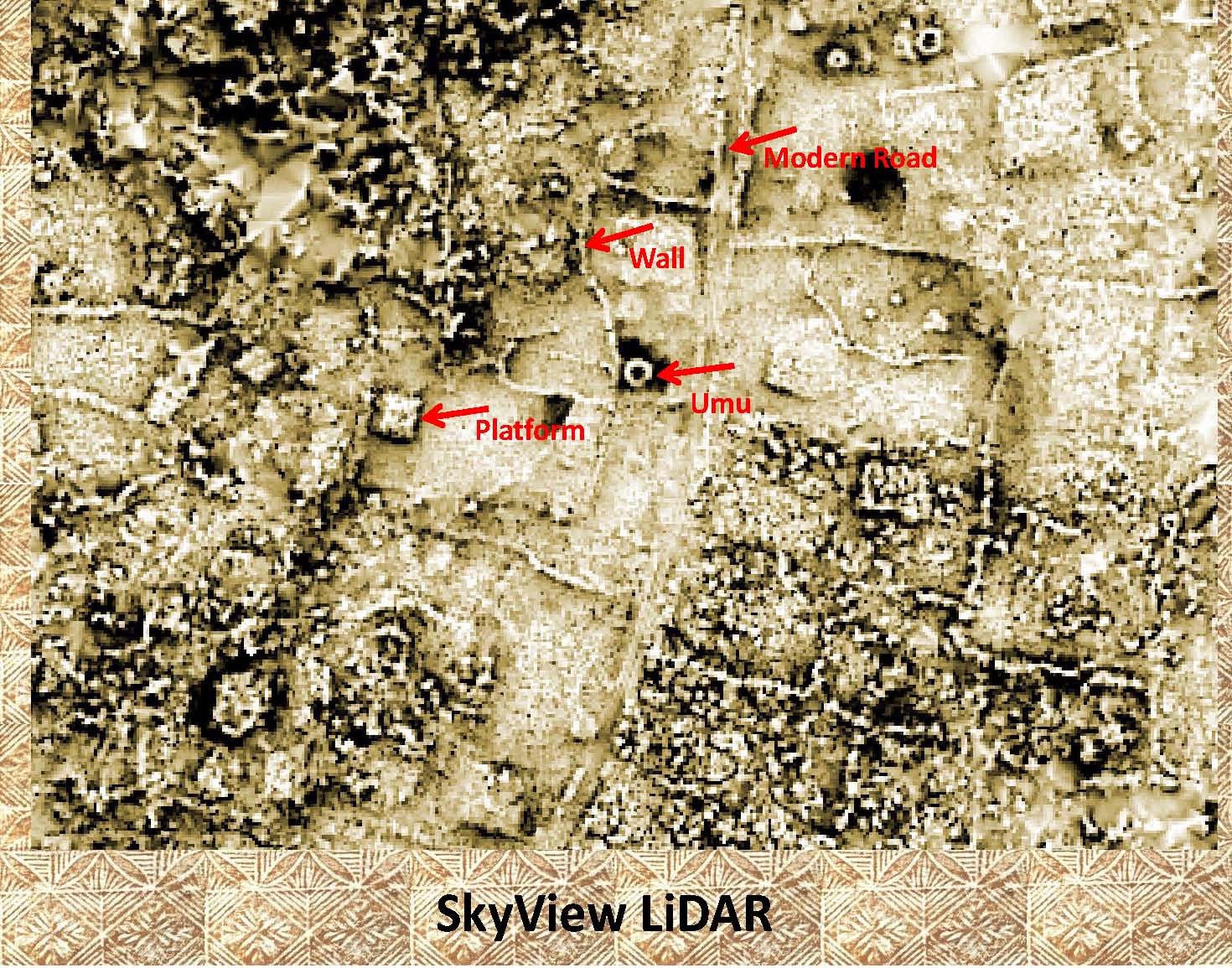 |
This is a LiDAR image of the same area as the aerial photo above. Notice the ease at which the platform, wall and umu can be located. Also notice the additional similar unmarked features in the area. |
|
|
References: Additional information about umu ele'ele / umu ti can be found in the following publication: Green and Davidson (1974:236-237) Archaeology in Western Samoa, Volume II Carson (2002) Ti Ovens in Polynesia: Ethnological and Archaeological Perspectives Jennings, et al (1980) Archaeological Excavations in Western Samoa Cox (1982) Cordyline Ovens (Umu Ti) in Samoa |